It was only fifteen years ago that there were at least nine brands of cars that there aren’t anymore. Oldsmobile, Pontiac, Saturn, Mercury, Plymouth, Saab and Hummer. Under each of these banners, whole lines of cars – and trucks and SUVs – were sold.
None of the above are sold anymore.
Why did this great culling occur? Probably for some of the same reasons another is probably about to happen.
There was a financial crash in ’07 that led to a secondary crash – in car-buying. The Big Three – which by then had lost about a third of their total market share vs. what it had been in the ’90s – went bankrupt, having too many cars that cost too much to make and market to a declining market. Then they went hat in hand to the federal government, which put its hands in the American taxpayer’s pockets, to mulct the funds used to “bail out” the failing Bigs, especially GM.
As part of the subsequent reorganization, brands that had once been “full-line” divisions – the term means what it sounds like means; i.e., each sold a full line of models within the brand, in effect operating as an entire car company, in and of itself – were simply cancelled outright.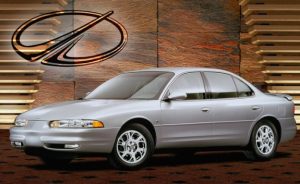
What’s interesting about that – because it’s also predictive – is that all of the cancelled brands were duplicative. By the time of the crash, brands like Olds and Pontiac were selling full-lines of the same line being sold by other GM brands, such as Chevrolet and Buick. They had, in effect, become re-branding divisions or marketing arms of the same things being sold (and marketed) under the rubric of GM’s other brands. One good example of this being the re-branding of the Chevrolet Camaro as the Pontiac Firebird, which it was in name (brand) only – being functionally a Camaro as much as the actual Camaro.
There were many other such examples – for instance, the Plymouth Neon. Which was a rebranded Dodge Neon. And the Mercury Marquis – which was Ford’s Crown Vic.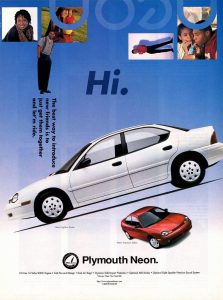
The brands that aren’t around anymore weren’t always rebranding agencies for other brands’ vehicles. Pontiac and Olds, for example, once-upon-a time engineered their own engines, which were different from the engines engineered by Chevy and Buick and Cadillac – which did the same as regards their engines. There were some shared things – such as basic underlying frames (e.g., the Camaro and Firebird were both “F” cars) but there were enough real differences to make a difference.
To continue with the Camaro-Firebird analogy, the Pontiac had bigger displacement/lower-revving V8s that were esteemed for their more prodigious torque while the Chevy offered smaller but higher-revving “small block” V8s that found favor with those who preferred the operating characteristics, feel and sound of that layout over the other.
There were a lot of other differences, too – such as the Pontiac being known for a softer rather than firmer ride. These were all noticeable, functional differences that transcended the merely cosmetic.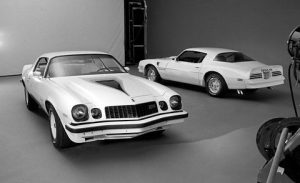
It gave buyers a reason to buy a Pontiac rather than a Chevy (as well as the reverse). It also fostered a healthy in-house rivalry between the engineering departments of these respective GM divisions, which – at the time – were, in a very real sense, independent car companies and not just marketing arms of the same company.
This led to each brand striving to improve its offerings relative to the other – resulting in both becoming better as well as different.
By circa 2007 – right around the time of the last economic implosions – they had become staid re-sellers of the same things, differently branded. 
What will become of today’s remaining brands when all of them are selling the same electric cars, differently branded? When the only differences are superficialities – such as color and size? How many different ways can you sell the same basic thing? When there are no longer different engines – and no transmissions (electric cars are generally direct-drive cars; the motor turns the wheel without needing the intermediation of a transmission) and the only real differences are the prices – and the badges – why would buyers care for one over another vs. four or five others, just like it?
Is there any more market demand for an electric BMW that is fundamentally the same as an electric Audi – which is essentially the same as an electric Lexus – than there was for a Pontiac Firebird that was fundamentally the same as a Chevy Camaro or a Plymouth Neon that was indistinguishable from a Dodge-badged version of the same thing?
Badge-engineering can be indulged – for a time – when there is enough money being made re-selling the same things. Olds and Pontiac and Plymouth survived for decades after their beating hearts – their engineering arms – had been ripped out of them and the embalmed carcasses kept around in the manner of a well-embalmed dearly departed.
But it cannot be indulged when the money for the undertaker begins to trickle to nil – as happened the last time. All of a sudden, it becomes unsupportable. And that which cannot support itself inevitably no longer does.
Unless, of course, the government continues to support it (by using its power to force us to support it).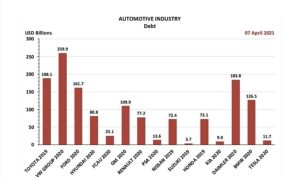
Both are shaping up to happen again. The difference, this time, is that every brand – just about – is making the same things or has announced their intention to do just that. Salt into the mix that most people have less money to spend on anything, to say nothing of cars that continue to get more and more expensive to buy. Electric cars, especially – which cost on average 30-50 percent more than an otherwise similar car that’s not electric.
It is not unlikely that – after the dust settles – there will be even fewer brands remaining than disappeared 15 years ago.
Maybe just one brand will remain. Consolidated Motors, anyone? One car, in different sizes and colors? The Universal Transportation Appliance.
It’s exactly the result you’d expect to arise from the consolidating-homogenizing effect of government, with the electric car being the ultimate manifestation of that.
. . .
Got a question about cars, bikes or anything else? Click on the “ask Eric” link and send ’em in! Or email me directly at EPeters952@yahoo.com if the @!** “ask Eric” button doesn’t work!
If you like what you’ve found here please consider supporting EPautos.
We depend on you to keep the wheels turning!
Our donate button is here.
If you prefer not to use PayPal, our mailing address is:
EPautos
721 Hummingbird Lane SE
Copper Hill, VA 24079
PS: Get an EPautos magnet or sticker or coaster in return for a $20 or more one-time donation or a $10 or more monthly recurring donation. (Please be sure to tell us you want a magnet or sticker or coaster – and also, provide an address, so we know where to mail the thing!)
My eBook about car buying (new and used) is also available for your favorite price – free! Click here. If that fails, email me at EPeters952@yahoo.com and I will send you a copy directly!


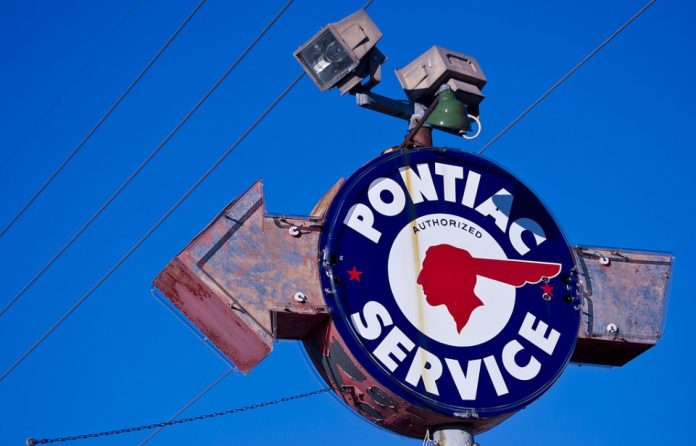

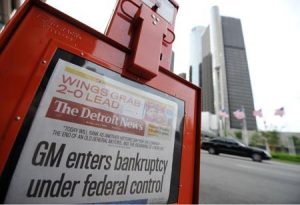








Barron’s:
‘For the second quarter, Rivian produced 4,401 vehicles and delivered 4,467 during the same period.
‘For now, it has the lead on Ford , which has sold about 2,300 electric F-150 Lightning pickups through June. Rivian, however, had a head start of a few months. Ford delivered 1,837 Lightnings in June.’
Ford F-series sales were 57,673 in June 2022. A breakdown isn’t available. Let’s guesstimate 35,000 of those were F-150s; the rest F-250, 350 and 450 Super Duty models.
So Lightning sales were about 5 percent of IC-engined F-150 sales in June.
To be fair, Ford is still ramping up production of the Lightning, for which it claims to have 200,000 “reservations.”
Will Lightning sales volume reach even 20 percent of the F-150 by end-year? And what happens after those “reservations” are either delivered or cancelled?
ELECTRIC police cars are struggling to reach crime scenes and emergencies without running out of power.
Officers in rural areas cannot find charging points on patrol and are having to switch to petrol or diesel vehicles.
https://www.thesun.co.uk/motors/19103124/electric-police-cars-running-out-power/
Fiat will likely be the next ICE models to disappear from ‘Merica- for the third time. (Good riddance, little unreliable Frog cars!). How they’ve managed to stay this long in this iteration amazes me- but were it not for being in bed with Chruddler…err…Chrysler, they’d be long gone already.
Funny how free choice brought the rich and poor autos – maybe the rich had nicer, faster ones but almost everyone could get one.
And government is taking that choice away. The rich will have them and they will be almost the same as the ones the rest of us have. But this time, there will be more that don’t have one at all.
The rich will have their own high voltage chargers, the rest will wait in lines or use regular 120v outlets.
Only the government can cement the difference in privilege between rich and poor.
The rich/government will continue to have the large V-8 SUV’s. They always carve exemptions out for themselves. The rest of us may or may not have access to the toasters on wheels. That would depend on one’s “social credit rating” or being a party member of “good standing”. Then that would require a few years wait time just like the old Soviet Union. The ones out of favor would walk and wait in line for daily rations. Biden’s build back broke perfectly explained.
I have no problem with any automaker (GM, BMW, Audi and others) who are full onboard the EV train going bankrupt. They bought into this garbage that they knew would implode the industry and they should pay the price for their stupidity. If GM and Ford fail because of this, so be it.
I wanna have my kicks before the whole shithouse goes up in flames, all right!
Jim Morrison
My hope is the whole government collapses from its rotten weight, becomes a loose confederation of states with a new, weak central government going back to its role as national defense, postage and roads and the states taking over everything else as it was intended. If California wants all electric cars and no grid or baseload generation to power them, not my problem. If my state wants to have cars with no safety mandates, I say GAME ON.
I’d be tempted to call it the Twentieth Century Motor Company …
https://theexplanationproject.fandom.com/wiki/The_Story_of_the_Twentieth_Century_Motor_Company_(told_by_Jeff_Allen,_the_tramp_on_Dagny's_train)
Can’t get to the action if you ain’t got no traction.
A charging station in Las Vegas one day a few days ago was overwhelmed with EV owners wanting to add some electricity to the batteries in their EVs. The line was long, owners were frustrated by the wait.
One EV owner had a small Honda generator in the trunk, someone brought a gallon of gas to fuel the generator so the EV could be charged for a while to keep moving a little later.
Another EV owner quipped that it be worth it to pay six dollars for a gallon of gas to avoid the charging station fiasco. “You should have bought a Honda Accord instead of the Honda generator, you would’t be here waiting in line,” said the provider of the gallon of gas.
1500 Kilowatt battery, not much use when you have to wait hours to charge, a thousand pound brick.
A six dollar gallon of gas, priceless.
A Inside EVs has a story on Tesla charging stations in Las Vegas that are inadequate for the number of Teslas presently on the road. One super pita.
It ain’t gonna work.
As the old saying goes: I want patience and I want it now!
For the Dutch farmers and fishermen, their patience has run out, they’re taking action to maintain their ability to live and survive.
Farmers will kill, forced to stop farming translates to rebellion and revolution.
First they came for the Dutch farmers, but I wasn’t a dumb farmer, so I didn’t speak up.
Then they came for the Dutch fishermen, but I wasn’t a Dutch fishermen, so I didn’t speak up.
Dutch fishermen are under the same diktats as the Dutch farmers, some will be forced out of business if they don’t comply with the edicts from Dutch authorities.
No more fish and chips for you.
I have a funny feeling EUcrats will be force fed bugs sometime in the near future. Cook Klouse, feed him to the hogs. Use a self-immolated Tesla for the fire.
Enough is enough.
‘At Inside EVs’ reads like it should.
Actually there will be two brands left, Trabants for the peasants and Zil limos for the overlords.
Beats Teslas and everycar CUVs.
Hi Ya Mike!
So true! I saw where Tesla now does not allow lease customers to purchase their leased vehicles at the end of the lease- They just take ’em back and say that they want them ‘for their autonomous fleet’ (Which doesn’t exist!)- while Ford is doing the same with their E-Transit vans, and is starting to do the same with their E-Mustangs in 12 states (and before long, in all states), only their tack is because they ‘want to responsibly recycle the batteries’……
So basically, you rent the vehicles…and then at the end of the contract they go away- you don’t get to purchase them, nor do they end up being available as used vehicles (Not that anyone’d want them as used vehicles, once they are out of warranty). Right now, I believe about 20% of these vehicles are leased, and soon it is expected that 50% will be- and probably more before long, as they make leasing options “more attractive” and ownership more prohibitive, on these high-tech short-lived vehicles- So essentially, in the near future, there will be no viable used cars- much less cheap reliable older ones.
“You will own nothing and be [very un]happy”. -(C)Louse Schwab.
At some point they won’t even sell them. Even to willing buyers.
The money will be in the rent from them.
There was abundant “consolidating-homogenizing effect of government” before the advent of EVs. Hence for the last 10-15 years, the only superficial difference between an Accord and a Camry is the badge and the grill. In pursuit of government mandated mileage, aerodynamics don’t vary. In pursuit of government “safety” standards, minimum structure does not vary, and so neither does minimum weight. Nor does a driver’s visibility. Which is the secondary reason I drove Miatas for 20 years. The primary being fun. They yielded to none of that male bovine excrement. I recently quit because I physically can’t drive a manual anymore. Which sucks. I do applaud Toyota resisting the EV thing. But they pretty much yielded to the rest, and Mazda for continuing the MX5. Though I have not driven any newer than 2008, so I don’t know how much they have yielded. Lest this turn into an essay, I won’t even go into SUVs.
If GM and Ford keep drinking the EV kool-aid it’s not just divisions that will disappear but the whole company. This time Uncle Scams credit cards will be maxxed and the only bailouts will come from our rare earth rich friends the Chinese Communist Party.
https://www.dailymail.co.uk/sciencetech/article-10984303/Tesla-no-longer-worlds-largest-electric-vehicle-maker.html
Honestly, If they continue this push to make overpriced golf carts with obnoxious massive screens in the dash they deserve to crash and burn. What sane company kills off the very products they’ve been refining for a century to compete in a field in which they’re already behind? How can ANY American company compete against the Chinese in EV’s when all the critical materials need to be imported from China? That’s to say nothing of the fact that all companies in China are agents of the state and many are subsidized so heavily they operate at a loss.
Hi Carbon,
Exactly so – and it may be just exactly the point; i.e., to empower Chyna -at the expense of what was America, once.
‘If GM and Ford keep drinking the EV kool-aid it’s not just divisions that will disappear but the whole company.’ — CarbonNeutral=Genocide
Pandemic-related malarkey — stimmy checks, child credits and the like — fueled an epic vehicle-buying binge, in effect borrowing demand from the future.
Well, the future is here now, and it ain’t lookin’ too damned bright.
The 2008 meltdown, in which GM went BK and Ford barely avoided it (losing an eye-popping $14.6 billion) showed that the underpinnings of the auto industry are pitifully weak.
Recession puts shaky, indebted companies like these at risk of demise even in normal times. But trying to navigate an externally-mandated transition in propulsion technology makes it more probable than not, that most who attempt this high-wire act will tip over and plunge to earth like the Flying Wallendas.
You can’t learn from gravity lessons when you don’t survive the impact.
Hi CN
Your government is pushing EV’s? Why?
China has infiltrated all levels of governments, taken control, (check out the leftist/communist takeover), your politicians bought off, paid to push the EV agenda.
Anybody pushing EV’s is a paid ccp shill.
Who benefits the most from the EV vehicle conversion? china does.
All the most important components in the new EV’s are all made in china. Then you are dependent on china for replacement parts, etc., in effect they take over the whole vehicle supply chain. Vehicle production then centralized in China.
the chinese are taking over the electric car market, they are starting to export their EV’s worldwide, their EV’s are supposed to be advanced and cheap, they will kill off the other manufacturers……
the chinese make most of the chips, maybe the shortage was to help their EV launch….lots of their cars coming here soon
at this rate everyone will be driving a chinese car soon, a lot of electronics in your car made there already…….
no wonder tesla moved a lot of production to china…
china…..it is where most rare earths are processed; and most of the mineral supply-chains for electric vehicles lead there, with existing supply sewn up.
https://www.youtube.com/watch?v=jclSYJb8oa0
I have not seen any expansion of the power generation and distribution network to even support 10% EV usage. In multi vehicle families how much would it cost to replace the electrical service for EV charging (that includes a 200 or 300 amp panel, heavier gauge cable to the panel and dedicated lines to where you park for charging)? As all new vehicle’s look the same has anyone rebadged their KIA SUV into a Mercedes SUV?
Landru,
And you didn’t even touch on the elephant in the room. There is no grid capacity to support it. Those “bigger wires” have to go all the way back to the generator.
The problem is there’s no generator to go back to, the greenies don’t want that filthy fossil or nuclear power, and the nimbys don’t want to see transmission lines. Good luck with all that.
I know I’m probably repeating myself, but the natural-gas-fired, 3-gigawatt Mystic Generation Station just outside Boston is slated to close in the coming years. So, they’re forcing us into electric everything, while shuttering power plants.
Myles,
I’m sure all those downtrodden commies in new england will cheer when it closes down. They already have near the highest utility rates in the country so this is just more of the same. They’ll all bend over even more and bury their faces even deeper in their govt/green/gaia pillow and ask for more. Getting stomped into the dirt is worth it to signal some virtue and make the northeast jews more rich and powerful.
Hi Myles,
I heard that the property has already been sold to the Encore casino across the street. The only thing to remain will be the switchyard; where they plan on getting the power from I have no idea. When deregulation came in Boston Edison/Nstar, my former employer, sold off the generation plants at fire sale prices but kept control of the substations and switchyards on the property. They were planning on getting hydro power from Canada but that’s been delayed for years by the nimbys who don’t want to see power lines. Hope they’re ready to freeze in the dark.
Mike; Yes I can’t figure it out either. Pilgrim shut down, now Mystic. I’m glad that I live in Hudson MA where we have a well managed municipal utility, low rates, they have a full backup generating system.
Regarding the switch to “alternative”, I did a detailed annual hourly simulation of a solar PV system to figure out how much solar PV plus storage it would take to provide 24/7 baseload power sufficient to replace Pilgrim’s 1,000 MW.
Turns out it would take a PV system covering 1,000 square miles (plus storage). to do that. And no existing battery storage system would work, so even that would take a battery breakthrough.
I used to live in that area and go to the mall in Marlboro(?) Beautiful area!
The Japanese auto industry looks to be on life support, or not. Toyota is using Subaru engines. I guess to prop them up?
The answer to the blandness of cars is that the interiors will be different, in the form of somewhat customizable graphic “skins” on the dashboards. You’ll be able to change fonts, background patterns, colors and mood lighting… as long as the choices available are DOT approved of course. And because success is sinful, you won’t want a flashy looking performance car anyway. Better to keep your wealth on the down-low, unless you’re on the approved celebrity list.
https://pagesix.com/2022/06/23/denise-richards-joins-onlyfans-after-daughter-sami-sheens-debut/
Fonts: that’s hilarious, Anon. So instead of installing a hot cam or headers, the cool kids will be browsing the web for something to replace that boring stock Helvetica. With higher resolution screens, I predict a comeback for serifs.
Serifs for the Serfs?
Even the dashes in today’s cars are bland, homogeneous and ugly. You have a steering wheel, a speedometer and a screen. that’s it. Differences in seat materials and cushioning separate an economy car with a luxury car. Cars are so bland, it amost doesn’t matter wheter or not they are elecric.
Interestingly now its reached the point where VAG is making the same decisions. They sold the Passat, Golf, Polo, Up, Tiguan all with at least half a dozen different badges…. or course with slightly different characteristics and price points. But as you know, VAG has already announced it is greatly reducing the number of cars its going to be selling – assuming some of the lesser known brands will also go.
‘every brand – just about – is making the same things’ — eric
What’s unprecedented is that it’s a top-down, gov-mandated policy, as part of a global climate change agenda.
But this year the green agenda has smacked the wall. Europe, busily phasing out coal and nuclear power generation last year, now is scrambling to import coal as Russian gas and oil flows dwindle.
What will it take to similarly discredit the all-EVs-by-2030 agenda, which California likely will finalize this summer on behalf of itself and 14 other states, under a provision of the Clean Air Act which bizarrely enables California Über Alles in setting emissions policies?
Many boom-time delusions get exposed as tonto [silly, foolish, idiotic] in the icy grip of economic winter.
One suspects, for instance, that the cohort of well-heeled, green-oriented early adopters with suitable garages (240-volt circuit) and compatible moderate-commute lifestyles has already bought their EVs.
That is, the EV market may be more saturated than the mad mandaters think. They assume a classical S-curve displacement of ICEs by EVs, just as flat display screens displaced bulky CRT tubes in a decade or two.
What if their assumption is flat wrong? EVs are not obviously superior and cheaper, the way flat display screens are.
One early read will be sales of Ford’s F-150 Lightning electric pickup, as a percentage of Ford’s total pickup sales including traditional IC-engined ones.
Is the F-150 Lightning going to completely displace the gas-burning F-150?
I don’t believe it. The Lightning, I reckon, is going to hit a ceiling (20%? 33%) of Ford’s total pickup sales, stall, and fail to gain further altitude.
Jim,
I suspect Europeans are not going to be focused much on “climate change” this coming winter. Other than wishing they had more control over the climate, in their homes.
Would not electric pickups (or vans) make sense for a contractor (company) who has their fleet come back to the warehouse every night? For just daily use, I think EV’s can make some sense, esp as a way to avoid high gas/diesel prices. The cost-benefit analysis gap is certainly closing as fuel prices (purposely) move higher and higher. As a commuter, I can see the utility of EV’s as commuters, but really commuting duty only.
Tpm: Light duty work vans (transit connect size or smaller) for a service/repair type company perhaps. Heavy trucks or even HD pickups could never haul heavy equipment/materials with current EV battery tech. The cost benefit may not be there considering what a bank of charging stations would cost to install and operate. Commercial electrical rates often are billed on “peak demand” not actual Kilowatt usage meaning you get charged for your maximum surge of usage as if it is the continuous usage all day every day. How much of a demand surge would occur when all EV’s were plugged in at the end of the work day every night? I don’t have definitive answers. Fuel expense isn’t nothing, but it is a drop in the bucket compared to most other operating expenses in contracting operations that I’ve been involved in.
Sicillian,
Back in the late1980s when I was writing off vehicle expense, the IRS allowed a 50 cent per mile deduction in lieu of record of actual expense, which means it cost more than that. I think gas was about a dollar a gallon. Which means the average pickup that got about 17 miles per gallon was only costing a bit over 10% of that for fuel. So if you bump gas price to 5 dollars per gallon, it would still only cost about 50%. I have no idea if the IRS still offers that deduction, or how much it might be, but it could give one an idea of what it costs to operate one. Opposed to taxes, licensing, insurance, depreciation, and maintenance, and whatever I’m forgetting, probably still not a lot.
Hi John, it just went up to 62.5c/mile from 58.5 a couple weeks ago, and IMO it’s not high enough considering current conditions.
The rate has always been intended to cover all operating expenses (insurance, maintenance, fuel, etc…) for an ‘average’ priced car.
Chris,
As I said, “which means it costs more than that”. The IRS is not going to allow any profit from such allowance. It has to remain less than recorded actual expenses, as a ‘convenience service”. 50 cents in the late 1980s with fuel about a buck a gallon? And now 62.5 cents per mile with fuel at five times that? Not to mention the vast increase in depreciation because of increased vehicle prices. In the 1980s I bought a 2WD 3/4 ton Dodge for $13k. An ’89 4WD Dakota for $17k. There are precious few cars that can be bought for that today. And they aren’t much.
The rate has always been intended make you believe it covers all costs. Not even close.
Delivery services will be making use of them. Amazon is a big investor in Rivian for that reason; they want Rivian to make their local delivery vehicles. There’s also Arrival, a UK based company that could change the game when it comes to vehicle manufacturing. They have a delivery van, bus, and a car optimized for Uber drivers. UPS is working with them to design EV delivery vans.
Rather than build vehicles in a big, expensive, central factory, Arrival will use local microfactories, which will be built where the vehicles are needed. It can fit in a warehouse sized building. They’ll use locally sourced materials and parts for production. The materials are recyclable. Arrival promises to change how vehicles are built.
So yeah, EV delivery vehicles make a lot of sense in cities for the reason you stated: they return to the same depot every night. Not only that, they’re used locally with all stop & go driving, which is where the EV makes the most sense.
INGSOC. And they will love it.